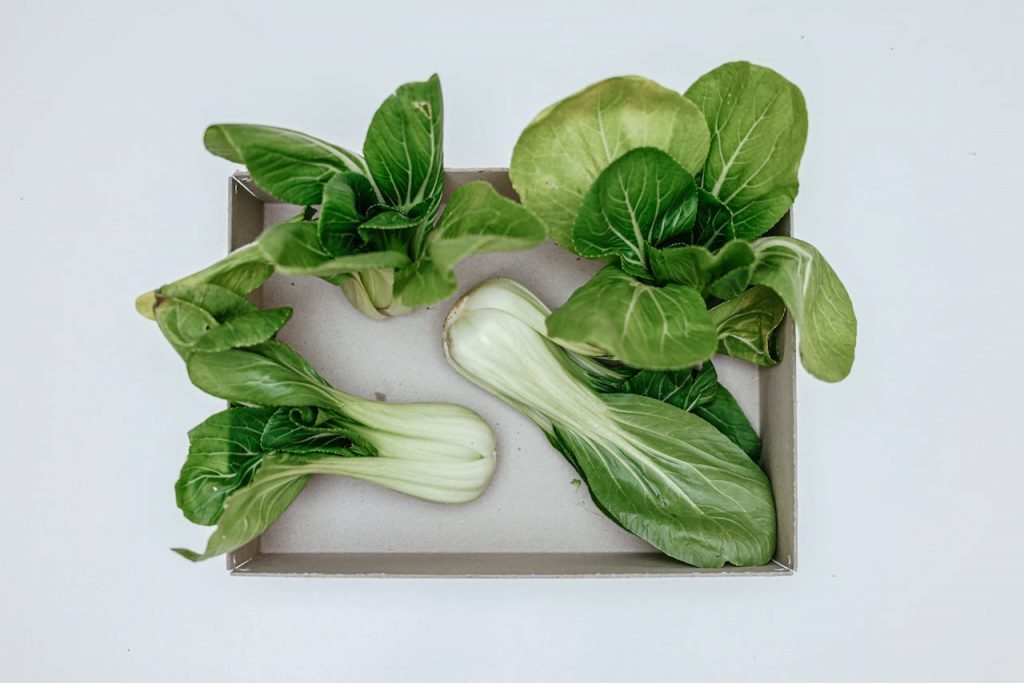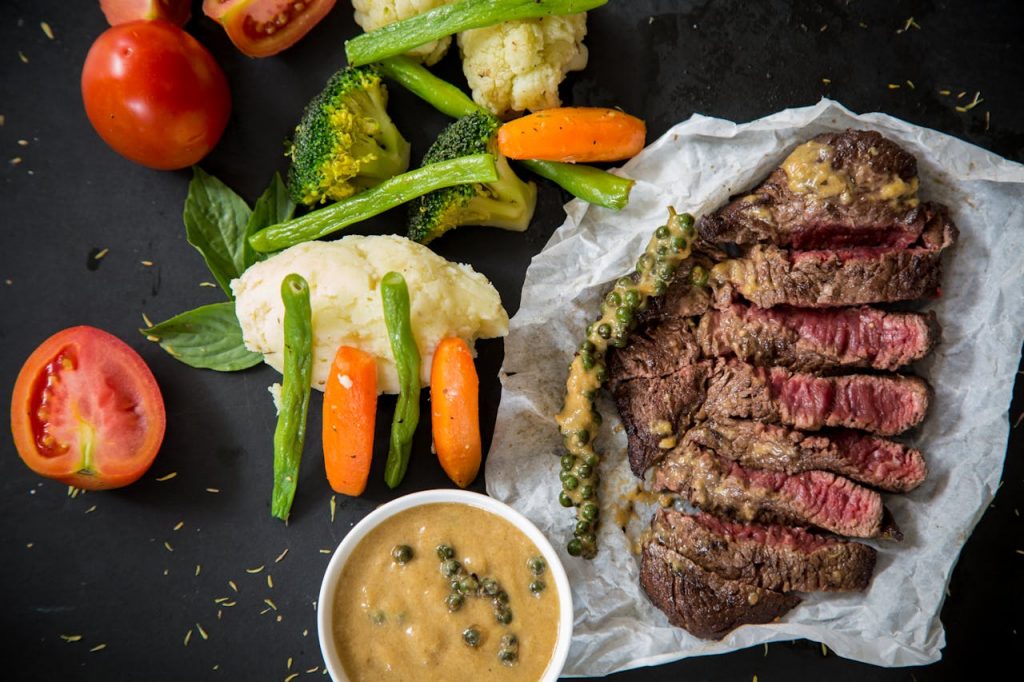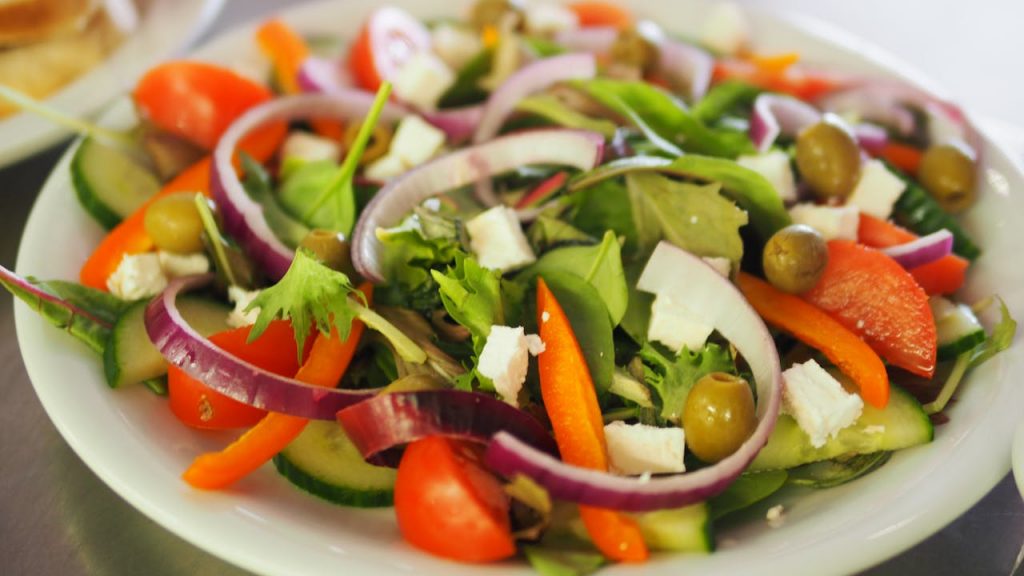
5 Essential Ingredients for Crafting a Healthy Salad
In today’s fast-paced world, where convenience often trumps nutrition, it’s crucial to find simple yet effective ways to incorporate healthy choices into our daily lives. One such avenue is the ubiquitous salad – a versatile dish that can be a powerhouse of nutrients when crafted thoughtfully. In this blog, we’ll explore the five essential ingredients that can elevate a salad from a mere side dish to a nutritional powerhouse.

Leafy Greens: The Foundation of Nutrient Density
Every healthy salad begins with a robust foundation of leafy greens. Whether it’s crisp romaine lettuce, nutrient-rich spinach, or peppery arugula, these greens are packed with vitamins, minerals, and fiber. Dark, leafy greens like kale boast an abundance of antioxidants, which help combat inflammation and promote overall health.
Leafy greens are a low-calorie, high-volume food, making them an excellent choice for those looking to manage their weight. Including a variety of greens in your salad not only enhances its visual appeal but also provides a diverse array of nutrients. From vitamin A to vitamin K, folic acid to iron, these greens contribute to optimal health and well-being.
Colorful Vegetables: A Rainbow of Nutrients
To truly maximize the nutritional content of your salad, embrace the concept of “eating the rainbow.” Vibrantly colored vegetables are not only visually appealing but also indicative of a diverse range of nutrients. Tomatoes, bell peppers, carrots, and cucumbers add an explosion of color and a plethora of vitamins and minerals to your salad.
The pigments responsible for these vibrant hues – such as lycopene in tomatoes and beta-carotene in carrots – possess antioxidant properties. Antioxidants play a crucial role in neutralizing harmful free radicals in the body, thereby reducing the risk of chronic diseases. Including a variety of colorful vegetables ensures that your salad is a nutrient-packed powerhouse, supporting overall health and vitality.
Protein Powerhouse: Building Blocks for Satiety and Muscle Health
A healthy salad is not just about leafy greens and veggies; it also requires a source of high-quality protein. Incorporating protein-rich ingredients such as grilled chicken, chickpeas, quinoa, or tofu transforms your salad into a satisfying and nourishing meal. Protein is essential for muscle repair and maintenance, and it also provides a feeling of fullness, making it an excellent ally in weight management.
Choosing lean protein sources keeps the salad light while providing essential amino acids necessary for various bodily functions. Additionally, protein helps regulate blood sugar levels, contributing to sustained energy throughout the day. Including protein in your salad not only enhances its nutritional profile but also makes it a more well-rounded and satisfying meal option.
Healthy Fats: The Secret to Flavor and Nutrient Absorption

While the term “fat” may raise eyebrows, it’s crucial to distinguish between healthy and unhealthy fats. Incorporating sources of healthy fats, such as avocados, nuts, seeds, and olive oil, into your salad not only enhances its flavor but also facilitates the absorption of fat-soluble vitamins.
Avocados, for example, are rich in monounsaturated fats, which are heart-healthy and contribute to overall cardiovascular well-being. Nuts and seeds provide a crunch while delivering essential omega-3 fatty acids, known for their anti-inflammatory properties. Including a moderate amount of healthy fats in your salad not only promotes satiety but also supports brain health and nutrient absorption.
Wholesome Extras: Superfoods and Flavor Boosters
To elevate your salad from mundane to extraordinary, consider incorporating wholesome extras such as superfoods and flavor boosters. Ingredients like berries, chia seeds, and herbs not only add unique textures and tastes but also bring additional health benefits to the table.
Berries, rich in antioxidants and fiber, contribute a natural sweetness to your salad without the need for added sugars. Chia seeds, packed with omega-3 fatty acids and fiber, provide a nutritional boost. Fresh herbs like basil, mint, or cilantro not only enhance flavor but also offer anti-inflammatory and digestive benefits. These wholesome extras not only make your salad more enjoyable but also contribute to overall health and well-being.

Conclusion:
Crafting a healthy salad is an art that goes beyond mere greens and vegetables. By incorporating a variety of nutrient-dense ingredients like leafy greens, colorful vegetables, lean proteins, healthy fats, and wholesome extras, you can transform a simple salad into a delicious and nourishing meal. The combination of these elements not only supports overall health but also ensures that your salad is a flavorful and satisfying addition to your daily menu. So, the next time you toss a salad, remember to embrace variety, color, and nutrient density for a truly wholesome and health-boosting experience.